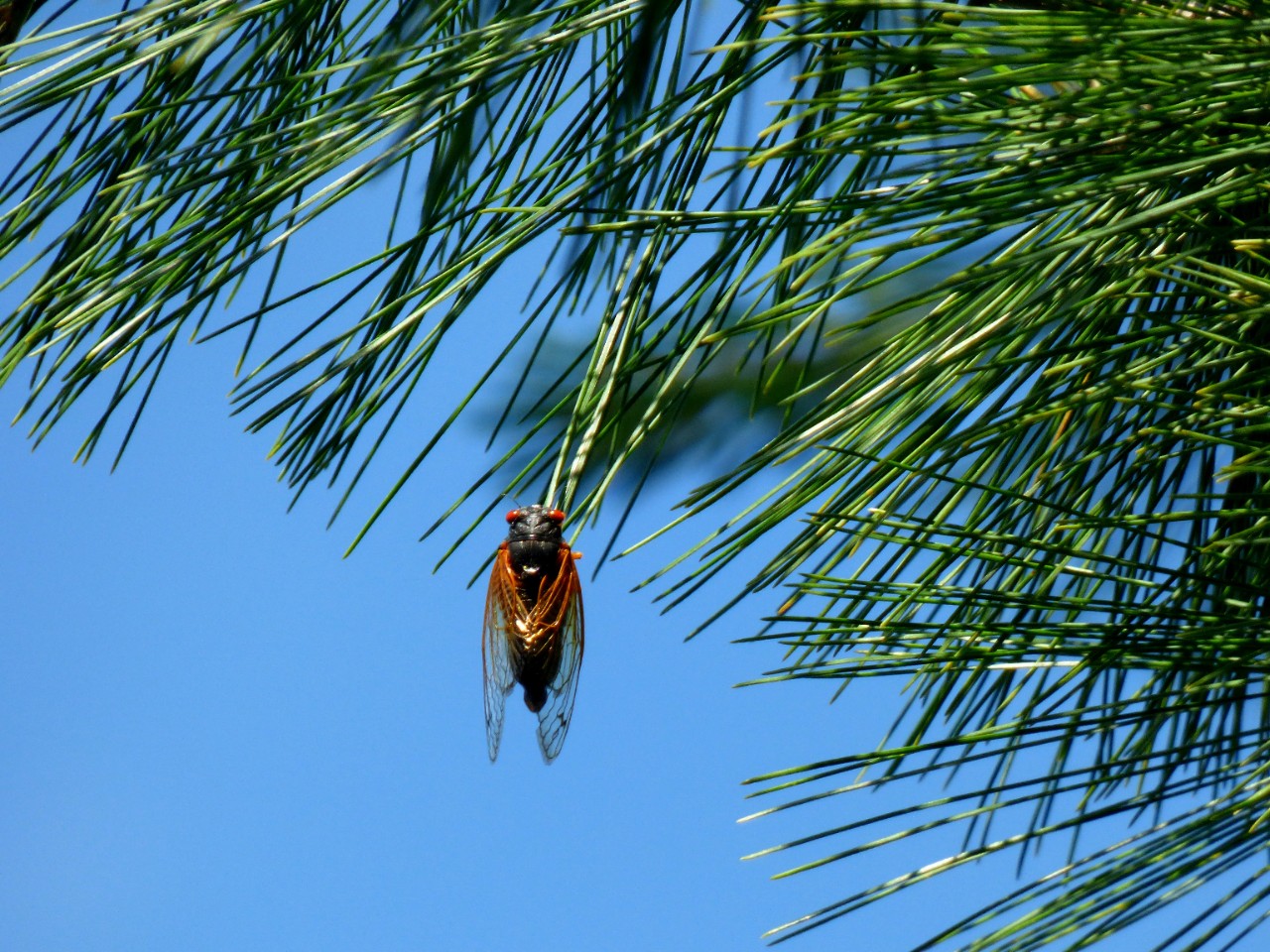
WLW: UC biologist says get ready for return of cicadas
Nathan Morehouse tells 'Eddie & Rocky' this year's emergence heralds a bigger one next year
Ready or not, the cicadas are coming.
University of Cincinnati biologist Nathan Morehouse spoke to WLW's "Eddie & Rocky Show" about what to expect with this year's emergence of 17-year cicadas.
The red-eyed insects spend most of their lifetimes underground as larvae where they feed on sap from roots, Morehouse said.

UC biologist Nathan Morehouse. Photo/Jay Yocis/UC Creative + Brand
The last time Cincinnati saw cicadas, the Boston Red Sox won its first World Series in nearly 100 years, Kanye West was Billboard's new artist of the year and a social network called The Facebook launched.
"We don't know how they count the number of years down below. Some biological clock monitors the changing of seasons," Morehouse told WLW. "But a season with two hot spells could throw them off. That might be why some are showing up early.
"Or maybe they're just bad at math."
Morehouse is an associate professor of biological sciences in UC's College of Arts and Sciences. He is in the middle of a international project sponsored by the National Science Foundation to study the evolution of color vision in jumping spiders.
Periodical cicadas are found from Texas to Massachusetts in more than a dozen regional broods, according to the U.S. Department of Agriculture. Cincinnati's cicadas are part of Brood X.
North Carolina, Virginia and West Virginia also will see cicadas emerge this year, according to the USDA.
Morehouse said this year's emergence in parts of Ohio and the Midwest likely will be a fraction of what we can expect in the summer of 2021. But some neighborhoods could see thousands of the noisy insects in the next month or two.
"We're not expecting to see them in big numbers until next year. But they're already coming out a year early," Morehouse said.
"This is a fun little surprise, depending on whom you are."
Morehouse said the males are responsible for the deafening cacophony associated with the massive swarms as they try to attract females, which lay eggs in the tree canopy. When the eggs hatch, the baby cicadas burrow into the ground to lurk another 17 years.
Featured image at top: UC biologist Nathan Morehouse says we could see 17-year cicadas starting this summer. Photo/Laura Gilchrist/Unsplash

Periodical cicadas are found from Massachusetts to Texas. Cincinnati will begin to see them emerge this summer and again next summer. Graphic/U.S. Forest Service
Related Stories
UC's art collection on display at the Contemporary Arts Center
January 5, 2026
University of Cincinnati leaders joined WVXU's Cincinnati Edition to talk about the university’s 200-year-old art collection, a new exhibition at the Contemporary Arts Center and the release of a companion book exploring the collection’s role in education and public engagement.
UC faculty and staff among Rising Star leadership honorees
January 5, 2026
Two UC faculty and staff members are among this year's Rising Star leadership program sponsored by YWCA Greater Cincinnati. Kelli Beecher, assistant professor in the UC College of Nursing, and Brittany Bibb, assistant director of programs and operations in the UC Division of Student Affairs, are among the emerging leaders of 2026. They were featured in the publication Movers & Makers.
What's behind the mysterious rise of migraines?
January 5, 2026
Weather patterns such as extreme heat and storm conditions have been linked to migraine attacks, and research shows those environmental conditions are becoming more common. As National Geographic recently reported, one of the leading theories behind this mysterious rise is that climate change may be playing a role.
